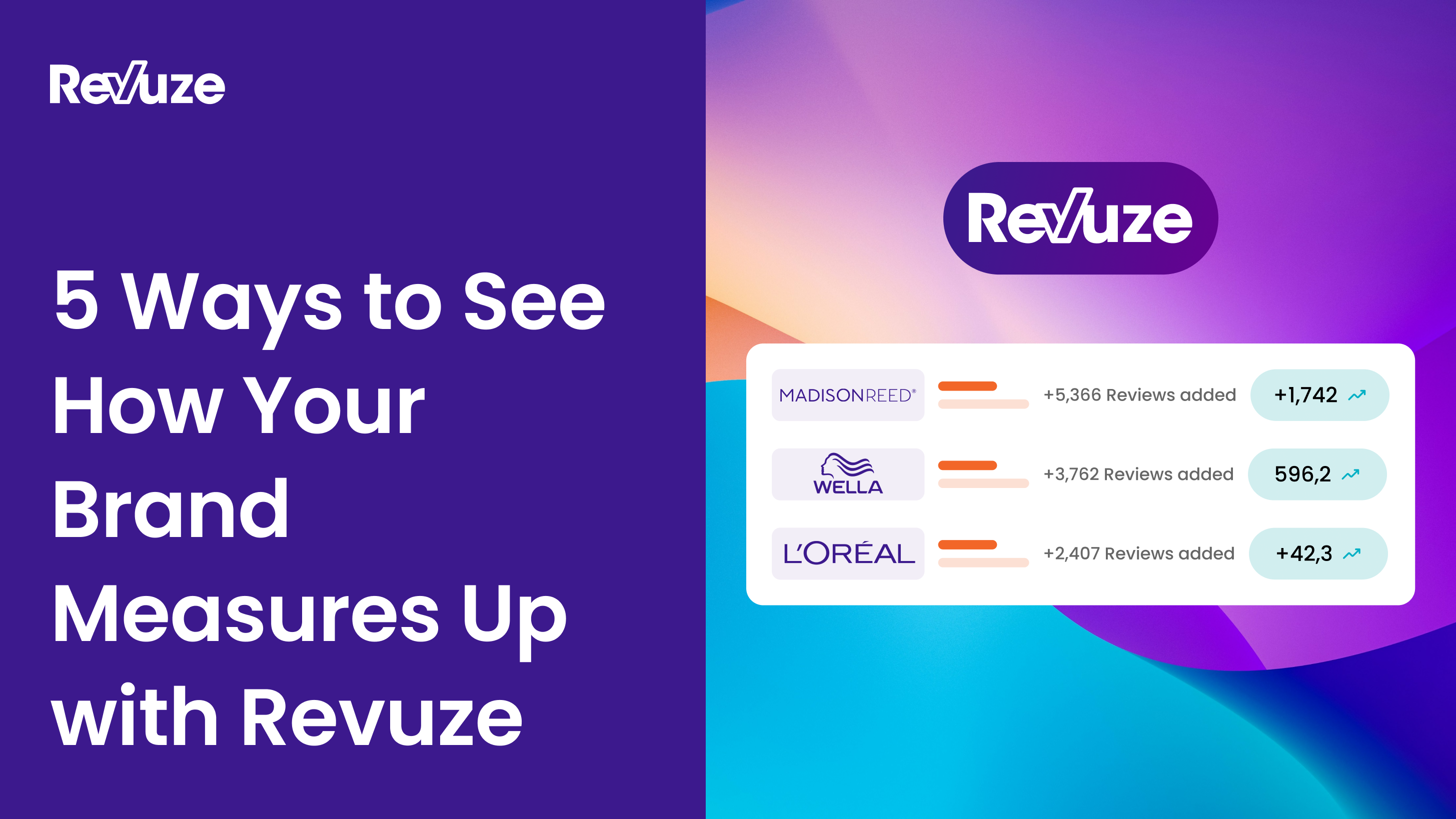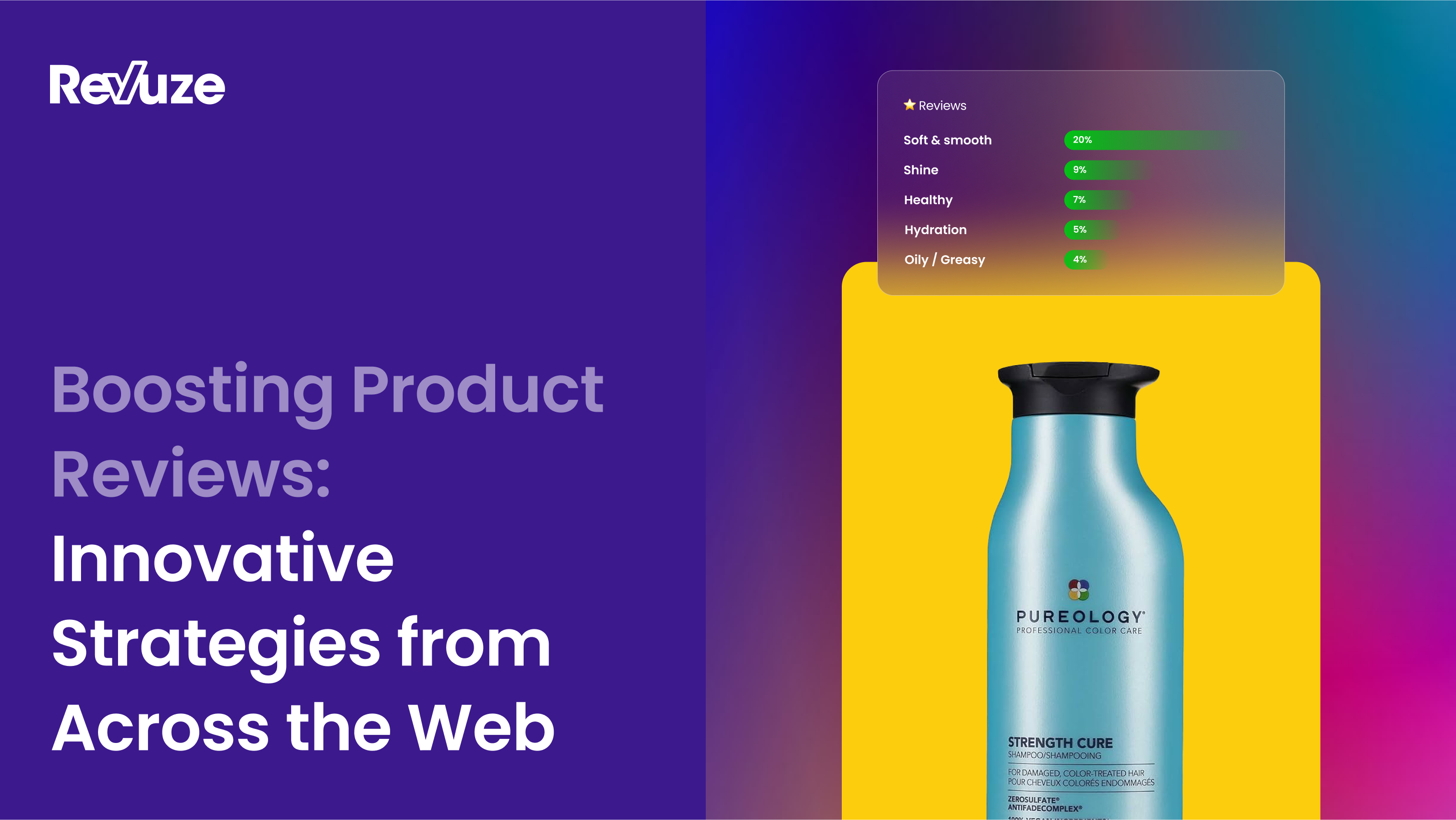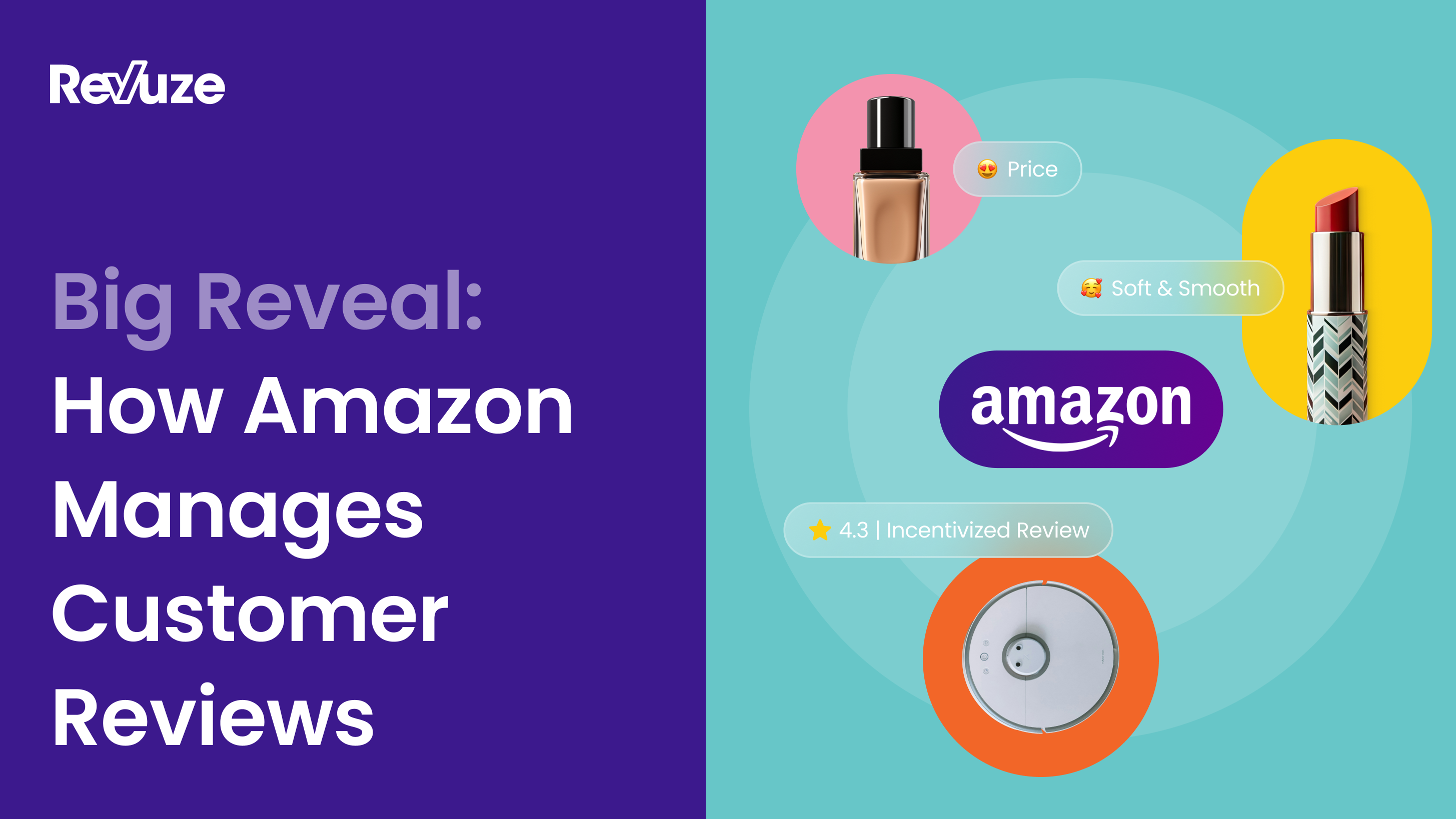
The concept of customer perception might seem like a simple thing, but in reality, there’s far more nuance involved than you might think. At its core, customer perception is your customers’ opinions of you and is a key factor in a consumer’s choices.
Being seen positively by consumers is a must to generate new leads while also retaining your current ones. Almost 70% of consumers say they’re more inclined to spend more money with a company they trust to treat them well, rather than go for a cheaper alternative.
And trust plays a big part in how customers perceive your brand.
But where should you start? Customer perception is a big topic, and countless factors influence it.
This guide is a good start. It will help you understand what’s behind customer perception and, most importantly, how to measure and improve to thrive in today’s market.
Let’s get started!
What is customer perception?
Customer perception refers to your customers’ awareness, opinions, and general feelings about the brand and its products or services.
It’s shaped not only by direct experience with your brand but by all surrounding interactions like news reports, advertisements, word of mouth, etc.
It’s important to remember customer perception isn’t the same across sectors. It can differ based on location and demographics.
For instance, Home Depot is very well regarded in the US, but when they tried to expand into China they didn’t consider Chinese culture’s adversity to DIY. By the end of their six-year expansion attempt, they had to shut their stores and deal with a $160 million loss.
Customer perception can be tricky to quantify. It isn’t necessarily directly connected to the overall quality of the products or services you provide but how they see you.
You must remember your customers are human, and emotions and logic mix together. It’s not enough to look at the value proposition.
That’s why you need to dig deeper to measure how customers feel about you. Good places to start are:
- Analyzing customer reviews.
- Looking at social media platforms.
- Conducting surveys.
This NEPA global survey on food habits is a great example of how perception affects our purchasing behavior. When asked about sustainable meat alternatives, only 25% of UK consumers said they would like to see lab-grown meat on their local supermarket shelves.
What is the customer perception process?
The customer perception process is exactly what it says on the tin. It is the process by which customers sense, organize, interpret and respond to anything related to your brand – be it a particular product, the brand as a whole, or somewhere in between.
Let’s break down this process by looking at an advertisement.
- First, the ad is seen by the customer.
- Then, they organize the information, taking it in and understanding its meaning and the message it conveys.
- The customer can then interpret the information based on the current situation and history with the brand.
- Finally, the customer responds to the advertisement, forming an opinion and associating emotion with it.

This all happens within a second or so, leaving little to no room for conscious thought to be involved.
But just because this process happens quickly and automatically, it doesn’t mean we can’t predict quite well what will happen.
When running an ad campaign, you don’t just whip up a graphic and run along with it. You try and understand what your target audience will take from it and how it will affect their perception of your brand.
Later, you can collect customer perception data via the previously suggested methods. This will help you better understand your ideal customer and the effects of your latest campaign.
You can find a great example of this if you look to KFC’s 2018 ad, which issued as an apology rather than a simple advertisement.

In early 2018, KFC in the UK ran out of chicken. That’s right, a business that mainly sells chicken ran out of chicken.
Since this naturally grabbed the attention of the local press, KFC responded in a manner that resonated with the British public – posting a full-page ad in the Metro with their initials rearranged to almost form an explicit word. It’s almost as if they were going “FCK, this is embarrassing”, a phrase that struck the bullseye with the British public.
Underneath, the company apologised for it’s failure, promising to do better in the future. KFC’s ability to laugh at itself took classic British humor, owning up to their mistake, and an appropriate form of advertisement to create one of the best responses to a PR crisis in the last decade.
Why is customer perception important?
While a positive customer perception is bound to net you new customers, it can help also drive growth via repeating customers.
By forming long-term, lasting relationships with your customers, you increase loyalty and customer retention rates.
Focusing on metrics such as these is key in ecommerce, as it’s considered much cheaper to retain existing customers than attract new ones.
Customers who have already purchased from you, and have built a positive relationship with you, are far easier to convince to purchase again than those who haven’t. To attract new customers, you need to:
- Convince them that their existing brands aren’t working for them.
- Show them that your brand can fulfill something their current one cannot.
- Overcome the human resistance to change with enough incentives.
- Convince them to buy from you.
You skip the first three steps with existing customers, making it a much more efficient and cheaper affair.
The key to customer retention is to align with their values and beliefs. This will depend on your market, who your customers are, and what demographics your customers belong to.
Older generations emphasize different things than younger ones, men on different factors than women. These are all generalizations, of course, and won’t hold for every customer of that particular demographic, but it’s important to keep them in mind.
Customer perception has two particular factors which promote strong loyalty and even advocacy:
Value alignment
A customer who perceives your brand as having the same values as them will intrinsically align themselves with you. Conversely, a brand with lacking or conflicting values will see customers migrate away to greener pastures.

The same Ipsos Global Trends Report 2021 also found that consumers’ three most common expectations of brands are:
- Committing to fighting climate change.
- Standing up for social issues, and
- Paying their taxes.
This is true worldwide, with the report looking at all six continents.

Businesses that are perceived to have outdated or harmful business practices will be met with rejection and even protest, while those who keep an eye on the values their customers hold will be embraced.
But it’s not enough to talk the talk. You also have to walk the walk, with actions speaking much louder than words. Shallow and meaningless gestures will be seen through, yet genuine commitment will be held in high esteem.
Microsoft is an interesting example of a company that shifted its value to keep up with the times. Historically, it was known as a combative and aggressive company. But with the appointment of Satya Nadella as CEO in 2014, it shifted towards more collaborative tactics.
The software giant now provides support for open-source software, PaaS, and IaaS solutions and, in general, is far more open to working with other developers.

Trust
Good customer perception signals to the consumer base that you are a trustworthy brand that will not lie, misdirect or cheat customers.
To build and maintain trust, the best practice is simply to be trustworthy, to say what you mean, and to be honest and open about your business practices.
Costa Brazil, for instance, laid out their Roadmap For Change earlier this year, stating their sustainability targets and their pledge to plant new trees to replace those their products required.

Unlike similar press releases and statements from similar companies which only showed the positive, they were open and honest about the difficulties of building a sustainable brand and admitted that they weren’t experts in the field. Many other businesses switching to eco-friendly means of production haven’t been willing to admit difficulties, leaving Costa Brazil as one of the few who will publically acknowledge setbacks.
At the end of the day, customer perception is about developing positive relationships with customers, which leads to increased sales and success.

Past experiences
It’s no wonder that past experiences can determine loyalty and retention.
As we’re all conditioned by our past, our reactions and knowledge are entirely dependent upon our previous experiences. In this way, good customer perception relies on having consistent good experiences.
A well-known phenomenon is hyper focus on particularly good or bad parts of an experience with a brand, with one bad experience tainting a person’s perception of that brand as a whole.
Thus, consistency is key in building good customer perception.
How to determine & measure customer perception
We briefly talked about the ways you can measure the elusive customer perception. Now’s the time to dive deeper.
It isn’t easy to keep track of all the factors that affect customer perception, but with a little investigation, you can usually find out what customers expect of you.
Using one method of information gathering alone will usually get you part of the story, but not all of it. For example, reviews, by their nature, are only left by those who have purchased from you. Thanks to the human tendency to only leave reviews in the case of particularly strong experiences, whether positive or negative, you’ll tend to get a skewed view of things.
You need to use multiple methods of data collection if you want to get the complete picture. That means complementing review data with other methods such as surveys and social media monitoring.
Collecting feedback via surveys
Surveys are great, as they can tell you the little details that you specifically need to know. You can ask the specific questions you want answered, and those who complete your survey will give you the answers. Sounds simple enough, right?
In reality, things aren’t so simple. Consumers tend to only answer surveys when they’re particularly motivated to do so.
A popular motivational tool is a monetary incentive. While it will get people to answer your questions, some may simply tick boxes randomly to obtain the reward.
That being said, you can somewhat overcome this by placing reverse-scale questions, helping you to weed out such responders.
For example, if marking 5 means an excellent experience in most of your questions, create an item where marking 5 means a terrible one. In surveys where all items are marked with 5, you’ll know people didn’t bother reading the question, and you can disregard their answers.
Another issue with surveys is they’re usually limited to your clients. Would you look at an email from a company you have never interacted with directly and think, “I’m going to complete this survey!”?
Finally, only people interested in answering questions will complete your survey. The issue is that your sample is limited to a specific subset of people that don’t necessarily depict your entire audience.
That said, surveys are still a great tool to gauge customer perception. You just need to keep their limitations in mind.
Once you’ve opted for one, it’s important to know how to read them and what you can get out of them.
Net Promoter Score (NPS)
The net promoter score is a value that’s based on a specific survey question:
“On a scale of 1 (very unlikely) to 10 (very likely), how likely is it that you would recommend us to someone else?”
Those who answered 9 or 10 are considered “promoters” of your brand, whereas 0-6 denotes a “detractor,” those who will decry you.
The relative ratios of these will give you an idea of how well your product or service is received and help quantify your overall customer perception.
Customer Effort Score (CES)
Similarly, the customer effort score is based on the question:
“On a scale of 1 (extremely low effort) to 5 (extremely high effort), how difficult was it for you to find a solution to your problem with us?”
The CES measures the effort that customers feel like they have to go to in order to get what they want from you, which is a crucial component in a customer having a good experience with you and therefore having a good perception of you.
Analyzing review data
Review data is solid. It’s information on your products or services provided by those who purchased from you and therefore is a reliable data source, right?
Well, not exactly.
First, you have to consider that you’ll get a skewed perspective from reviews thanks to people’s tendency to only leave them after standout experiences.
I’m sure you’ve come across review STAR ratings online and seen a lot of 5-star and 1-star reviews, but not very many in between.

Secondly, reviews can be faked. Whether that’s by competitors, the platform you’re using to sell on, or by people who have nothing better to do than make everyone else’s life difficult, you can’t necessarily rely on review data that isn’t directly linked to a purchase.
The problem then comes that, by only taking into account verified reviews, you might leave out plenty of genuine reviews that simply didn’t bother going through the verification process.
With Revuze’s data collection engines, you can take information in brands, product lines and even individual products, analysing them from every angle in order to pull as much information as you can from that data.
We use sentiment analysis, SWOT analysis, and more to give you a full 360 degree view of your brand, market standing, and competitors.
Social media listening
With the advent of the internet, the things people talk about daily suddenly became recorded and publicly available to analyze.
Using software, you can collect millions of text pieces relevant to your brand and analyze them with sentiment analysis in order to get a clearer picture of how customers feel about you.

Like previous strategies, social media listening is not without faults.
Social media is volatile, and one negative opinion can turn into thousands when passed on, then die out. If you’re not segmenting your data by time, this can give you a much lower figure than you’d otherwise expect.
Furthermore, not everything that people post on the internet is their actual opinion. Influencers get paid to say certain things; some people look to fit in by posting opinions others might hold, and others look to stir up outrage for amusement.
The lesson here? Take everything you get from social media monitoring with a grain of salt. It’s a good indicator, but it might not be reliable.
As you can understand, all data-gathering tactics present challenges. That doesn’t mean you shouldn’t use any. Quite the opposite. By acknowledging these challenges and employing more than one tool, you’re bound to get as close as possible to the real picture.
And once you have that, you can start working on improving your image.
What factors influence customer perception, and how do you improve them?

Many factors affect customer perception. In fact, almost every facet of interaction between customer and brand that you can name will have an impact of some kind. These can be tangible, measurable things or more abstract ideas.
The key to positively influencing customer perception is to do these things regularly, as it not only will tell you how your actions have been perceived but can tell you if customer expectations have shifted in the time between surveys.
This might seem far-fetched, but large scandals and world-shaking events can shake up the market and shift customer priorities over just a few months.
The top factors influencing customer perception will depend on your market, target demographics, location, etc.
In the previous section of this article, we talked about value alignment, trust, and past experiences as factors that affect customer perception and loyalty. Now, let’s take a look at other common ones.
Pricing/Quality
Pricing and quality often go hand in hand, so let’s discuss them as a pair.
A product’s overall quality strongly impacts customer perception, with certain prices bringing expectations of quality standards. When the quality of your product or service meets or exceeds expectations, customer perception rises.
Prices that are too high will put customers off, and ironically, so too will prices that are too low as they give the impression that your products have some hidden defect.
Setting a price for your products when launching them is never easy, but you can look to the other similar quality products on the market and what they are charging as an indicator of what might be a reasonable price to charge.
This doesn’t mean you should blindly follow your competitors’ pricing strategies. You should always monitor the sentiment around these prices, ensuring that customers are happy to pay these prices.
For an established product, the key is to keep an eye on the sentiment around your products’ pricing, quality, and how they combine.
You can do this with the help of sentiment analysis, text mining, and other forms of social monitoring, which tell you more about the overall picture than a simple survey would.
There is also the factor of brand value: a well-established brand can charge more for its products than an unknown one, owing to the trust consumers have in you.
You should also keep in mind that prices are dynamic. What customers were willing to pay upon initial release won’t be the same as what they’re willing to pay six months afterward, for example.
Customer service
When customers have an issue with your products or services, your ability to make them feel heard, listened to, and have their feelings respected greatly impacts your customer perception.

Good customer service relies on knowing your audience, what they desire and what they expect from you. In general, you should be able to learn a few things about your customer base and what they expect by monitoring reviews, social chatter, and surveys that you put out.
You can go further by segmenting these into demographics, allowing for personalization of customer service to a particular demographic or even individual if enough data has been collected.
The processing power required to personalize customer service isn’t something a human brain can output. However, advanced AI can assist you by analyzing the data and providing recommendations for how to approach the particular customer, problem, etc., based on previous customer service interactions that were successful.
You can take this process even further with hyper-personalization, which takes the philosophy to the individual level, using data and information collected on a specific individual.
Take, for example, the following interaction:
- You phone a company helpline, asking for assistance setting up your software.
- The person taking your call asks you for information on your software, then redirects you to another person who is more able to help.
- You then must explain everything you’ve already explained to the second person, wasting your time and theirs.
You’d feel quite annoyed at the repetition, wouldn’t you? Well, if the company had a database of information on their customers and their problems, the interaction would go more like this.
- You phone a company helpline, asking for assistance setting up your software.
- The person taking your call asks you for information on your software, enters it into a database, then redirects you to another person who is more able to help.
- The second person now has all the information that the first person entered into the database and can take over without wasting time.
In that case, you’d feel like somebody listened to you. The company took your words, kept a record of them, and used them further down the line to help you.
Businesses can also take things a step further by noting down common issues, keeping a record of their solutions, and making them accessible to users. Why bother calling a helpline if you can find the answers on the website?
At the end of the day, speed is key in customer service. Providing a personalized customer service experience can help solve problems quickly and efficiently.
Branding
Your branding sends a clear message to customers.
Your logos, artwork, packaging, and all other visible, tangible factors specific to your brand affect customer perception.
You can think of your branding as an extension of value alignment. You need to position yourself in a way that attracts your audience and aligns with their beliefs.
Brightly colored, shiny plastic packaging will catch customers’ eyes.
However, plain, more recyclable packaging may boost your customer perception with certain audiences.
Usability
The customer’s ability to use your product significantly impacts customer perception.
Placing step-by-step instructions on your products will make use easier, including easier-to-read instructions on boxes or packaging. You can even delve further into the design process by editing the shape of your products so that their use is intuitive even to someone unfamiliar with them.

A highly specialized brand of computer parts aimed at consumers who can construct their own devices doesn’t have to be as simplistic as a brand that focuses on the general public, who aren’t expected to have the computer know-how of the aforementioned specialized customer base.
Further additions you can make include so-called “poka-yoke” or “mistake-proofing,” where your products are made so that misuse is made difficult to achieve to prevent customers from damaging your product while attempting to use it.
A good example of poka-yoke is USB cables, which can only be connected in the correct direction and will refuse to slide into ports the wrong way, preventing any potential damage that could arise to both the device and the person operating it from a backward connection.

Advertisement
How you deliver your advertisements, as well as the contents of them, have a massive impact on customer perception. This is especially true of the former, with different target audiences having different preferred modes of communication.
Choosing the wrong mode of communication for your target demographics will have a net zero impact at best, as customers simply either ignore or do not see your advertisements, and a negative one and worst, as they see you as out of touch.

Gen Z, for instance, rarely pick up the phone if they don’t recognize the number calling them, nor do they answer the door if they’re not expecting someone, so cold calling and door-to-door sales will misfire as communication channels.
Instead, you’ll need to utilize digital and social media to reach this demographic in an effective manner.
Don’t forget the context, though. Knowing when and where to place your advertisements so that they grab attention but don’t distract from the current situation the customer finds themselves in is the key.
You’ve probably come across pop-up ads on smartphone apps or websites, those that cover the entire screen and completely derail any process or train of thought that was taking place beforehand. It’s extremely distracting and annoying.

This is an example of bad advertising, which will hurt your reputation if you allow yourself to be placed in those positions. Picking and choosing where you want your adverts to go is crucial to maintaining a good perception.
Passive advertisement, on the other hand, doesn’t affect the usage of the website or app in question. It’s a term that covers top banners, side adverts, and any other form of online advertisement that goes out of its way to avoid disrupting the user experience.

As you can see in the example above, the Forbes website uses banner adverts across the top of its page. While these adverts catch the eye, they can simply be scrolled or looked past to access the website’s content without interacting with the ad in any way. This makes the advert less intrusive, less annoying, and less likely to be met with a negative reaction.
Furthermore, the quantity of advertisements matters also. While it might seem intuitive that more advertisement equals more customers obtained, there comes the point where this is inverted. Too many advertisements can cause irritation, which is then associated with your brand and puts potential customers off interacting with you.
Customer reviews
Almost all customers who purchase online will take the time to read product reviews before purchasing.
The reviews that have been left, their content, quality, and even their number have a big impact on purchasing decisions. It’s been shown that consumers are weary of purchasing products with few reviews, even if the product in question is newly released.
While having good reviews is important, addressing negative reviews will have a positive impact overall on your customers’ views of you. It shows you are willing to listen and consider your customers’ problems.
Social media listening tools, dedicated CX teams, and sentiment analysis all play a part in keeping up to scratch with your customer reviews.
The key here is speed, with computers doing most of the work identifying and flagging especially positive or negative reviews in order for a human to see and respond in a short amount of time.
Recommendations and advocacy
People listen to the opinions of those they hold in high regard, whether that’s influencers, well-known names in a certain sphere, or friends and family. Your ability to improve customer perception in those people’s eyes can also have a knock-on effect that leads to improved customer perception overall.
By using influencers, promotional discounts for those who recommend your products to their friends & family, and making other forms of advocacy easier, you allow your customer base to do the hard work for you.
Unfortunately, besides paying influencers to advertise your products, the mechanics of recommendation isn’t exactly straightforward to influence, as they rely on nuances and factors beyond your control.
Ultimately, the best way to get customers to recommend your products or services is simply to give them a great experience – from the moment they search for you and buy your product, up until they need your help with it.
Location & shipping services
Convenience is a big factor in choosing a brand, with a location close to your target market’s preferred area of purchase being important. Your location will depend on your target audience, with younger, more tech-savvy customers being far more likely to purchase online, for example.
If you’re already an established business, it’ll be very expensive to move to another place to perform commerce there.
Luckily, shipping networks these days can stretch all across the globe. With the right setup, you’ll be able to reach those distant markets with ease.
So, what is the right setup?
Firstly, you need a good distribution system. By this, we mean that you need to have pre-existing plans for getting goods from one place to another across all options you plan to ship to.
This can be as invested as dedicated couriers, to as simple as knowing the local post routes. It’s up to you to decide what’s necessary, based on what is feasible from a financial standpoint and also what is expected of you.
Secondly, you need to factor in time. Certain borders take longer for goods to cross than others, and some shipping lanes can be disrupted by accidents or by human interference.
Distribution centers, places where you store your goods before the sale, can be dotted about in various places. You can refill stock there as necessary by keeping an eye on what is purchased in specific locations, either directly from the manufacturers or from a central distribution center.
In this way, while the overall distance the goods travel is the same, the distance between you and the customer is much smaller, making for shorter delivery times and increased customer perception.
Wrapping Up
The key to having good customer perception is understanding that customers’ reality is not necessarily yours and that what they see & do will vary from person to person.
There are plenty of factors that can affect how customers see you, from value alignment and trust, all the way to pricing and service.
Collect and analyzing this data is crucial to driving growth. With it, you’ll be able to pinpoint what consumers think of you and how they see you
In the end, though, the best way to gain good customer perception ultimately is to provide them with an excellent customer experience. Not sure how to do that? Check out our comprehensive blog on the topic.
 All
Articles
All
Articles Email
Analytics
Email
Analytics








 Agencies
Insights
Agencies
Insights